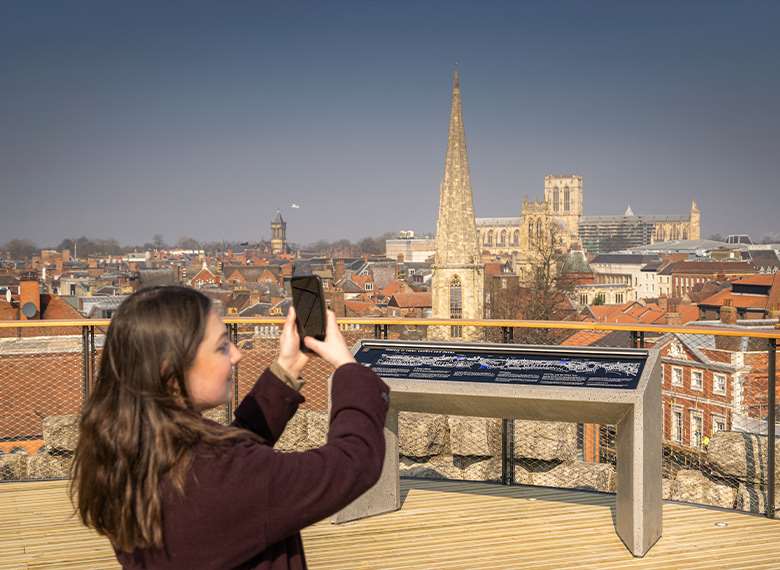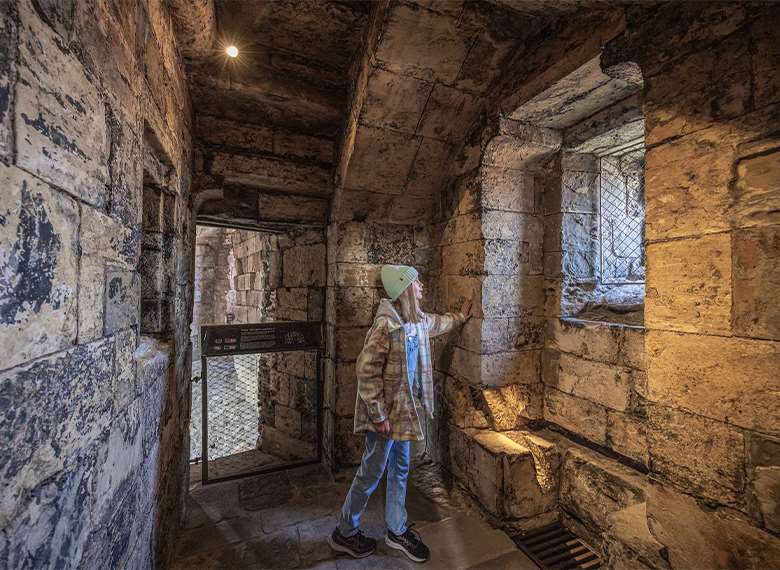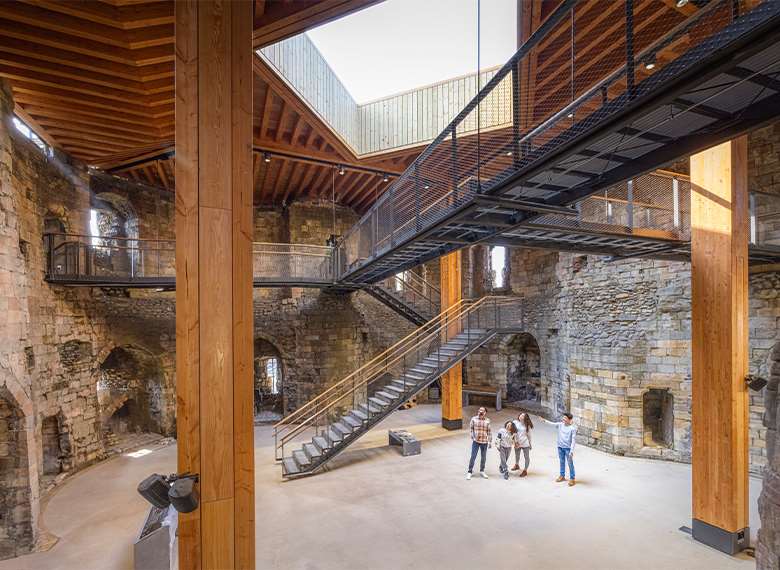
Immerse yourself in centuries of history at one of York’s most iconic sites and experience stunning views over the ancient city.
Built to subdue the rebellious north by William the Conqueror, Clifford’s Tower has been a royal mint, a medieval stronghold and a Civil War garrison. In 1190, one of the worst antisemitic massacres of the Middle Ages took place on the site of the tower when York’s Jewish community were trapped there by a violent mob and many Jews chose to commit suicide rather than be murdered.
Today, a new roof deck gives unrivalled views over York’s historic skyline, with its medieval buildings and famous Minster. Inside, new walkways and staircases have opened up parts of the tower that have been off-limits for centuries, and immersive soundscapes and stories are bringing the tower’s turbulent history to life like never before.
York’s iconic ancient monument is home to one thousand years of history. The raised earthwork was once the site of a timber keep built by William the Conqueror. It burnt down during the worst event in the site’s history: the massacre of the Jews in 1190.
Clifford’s Tower has looked over the city of York from 1245 until the present day. Once part of York Castle, the tower played a role in turbulent national events such as the Dissolution of the Monasteries and the English Civil War. Today the site is still giving up its secrets.
Clifford’s Tower has looked over the city of York from 1245 until the present day. Once part of York Castle, the tower played a role in turbulent national events such as the Dissolution of the Monasteries and the English Civil War. Today the site is still giving up its secrets.

Climb to the top of the tower to explore the spectacular new roof deck and take in the amazing 360° views over the heart of the ancient city.
Handy information panels make it easy to trace the history of this part of York and spot some of its best-loved buildings, from York Minster to St Mary Bishophill Junior, the oldest surviving building in York.
On a clear day you can see as far as the North York Moors.


You can explore more of Clifford’s Tower than ever before thanks to new internal walkways and restored historic staircases.
For the first time in centuries you can see the medieval garderobe, or toilet, built for King Henry III – the only one of its type known in England. Henry’s chapel is also open after our experts repaired its roof and carefully conserved its medieval stonework.
Take a seat on one of our new audio benches and listen to dramatic stories about the 1069 uprising against the Normans, the efforts to repair the tower during the reign of Richard III, and a destructive explosion that seriously damaged the castle and tower in the 17th century.
As you make your way around the tower, you will be immersed in the sounds of the past. Be transported to a busy 14th-century kitchen, listen in on medieval gossip and hear the destruction of the Norman wooden keep.
Transcripts of the stories are available.

